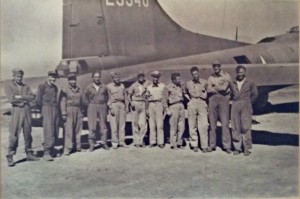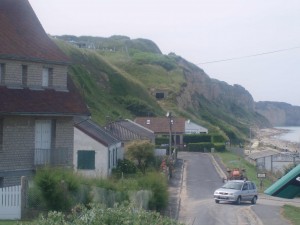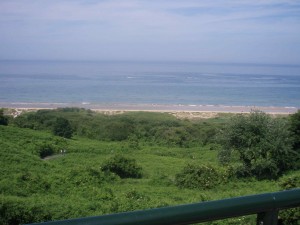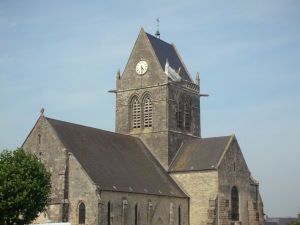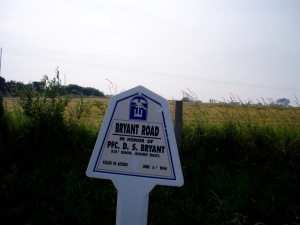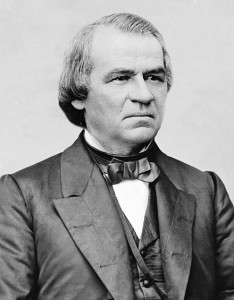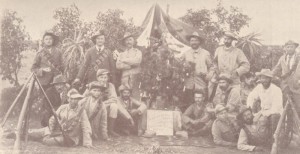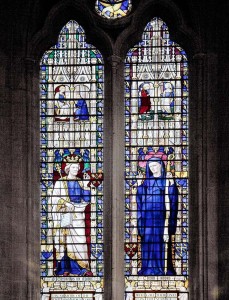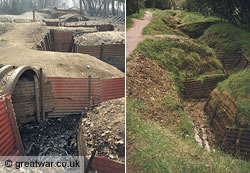I have posted a few times on Biology and should really do more. Here is one.
In a previous post, I stated that mitochondria are not present in sperm.
The “African Eve” theory is derived from the fact that all mitochondria are inherited from the mother. There are no mitochondria in the sperm.
That was a mistake as, someone pointed out, sperm have motile flagellae and that requires Mitochondria. However, my second comment was also, perhaps, incorrect.
An astute reader pointed out that my statement above is incorrect. Actually, it is a sign of how old I am as this was the previous understanding. However, sperm do have mitochondria but they are tagged for destruction and do not survive in the egg. Why this is, is not explained although the paternal mitochondria may be harmful in some fashion.
Now, I might still have been wrong.
But new research suggests that in some cases, mitochondrial DNA can be inherited from fathers, too. A group of researchers found three unrelated families where individuals had mitochondrial DNA from both parents. A total of 17 people across these three families were affected, suggesting that mitochondria aren’t as exclusively maternal as scientists believed.
In nearly all mammals, this mitochondrial genome is inherited exclusively from the mother, and transmission of paternal mitochondria or mitochondrial DNA (mtDNA) has not been convincingly demonstrated in humans. In this paper, we have uncovered multiple instances of biparental inheritance of mtDNA spanning three unrelated multiple generation families, a result confirmed by independent sequencing across multiple unrelated laboratories with different methodologies. Surprisingly, this pattern of inheritance appears to be determined in an autosomal dominantlike manner. This paper profoundly alters a widespread belief about mitochondrial inheritance and potentially opens a novel field in mitochondrial medicine.
There are lots of new developments in biology, such as studies of dental specimens in archeology.
An example is the use of plants in the diet of Neanderthals.
The most popular idea is that the disappearance of the Neanderthals was caused by the greater competition of the ancestors of modern humans, Homo Sapiens, who appeared more or less at the same time as the Neanderthals disappeared from Europe, and one of the explanations as to how that happened could be their diet. The Neanderthals are thought to have had more limited diets, while our ancestors had more flexible, adaptive diets that included seafood and a variety of plants.
Yet even though archaeological science has advanced considerably over the last few decades and has come up with new theories about the diets of the Neanderthals, today we still only have a patchy image of their dietary ecology given that we lack full, environmentally representative information about how they used plants and other foods.
This new piece of research into the fragments of dental calculus or tartar shows that the use of plants was a widespread, deeply-rooted subsistence strategy of the Neanderthals.
More detail is coming as dental tartar is beginning to be analyzed.
Archaeological tooth tartar has previously been shown to preserve milk proteins, but the international study, led by researchers at the University of York and the Max Planck Institute for the Science of Human History, has proved for the first time that it can also reveal more precise information about a wider range of food proteins, including those from plants.
And
Analysing 100 archaeological samples from across Britain, as well as 14 samples from living dental patients and recently deceased individuals, the research team found that potential dietary proteins could be found in about one third of the analysed samples.
Dr Speller added: “In the teeth we look at from individuals who lived around the Victorian era we identified proteins related to plant foods, including oats, peas and vegetables in the cabbage family. Occasionally, we find evidence of milk and oats in the same mouth — I like to think it’s from eating porridge!”
We know quite a bit about the diet of “Otzi,” the Iceman found in the glacier in 1991. His remains are a unique treasure for anthropology.
More recent analysis of Ötzi’s stomach and intestines has resolved this contradiction: the contents of his intestines have revealed fragments of bones from an ibex, alongside various remains of plant origin. A detailed genetic analysis of his intestinal contents also showed that he had consumed venison. The latest study conducted on his stomach contents revealed that his last meal consisted largely of ibex and venison with a high percentage of fat. Studies have also shown that the Iceman – and, indeed, the entire population of present-day South Tyrol – had a very balanced diet. Early types of grain – such as einkorn and emmer – were probably consumed in the form of porridge or bread. The diet also included a large number of other plant products, including various vegetables, fruits and wild berries, as well as dried wild fruits.
We knew this by 1998 when I wrote my medical history book. Here is a 1998 article on his diet, which was known at the time./
But at the top of the colon, Zur Nedden made out a slight bulge, which the radiologist suspected was a clump of half-processed food. The progress of the food indicated that the Iceman had last eaten about eight hours before he died, possibly of hypothermia, on the Hauslabjoch pass, which cuts over the main Alpine ridge dividing Austria from Italy at 10,500 feet above sea level.
Not until several years after the discovery did the Innsbruck scientists finally cut a hole into the mummy, insert an endoscope, and snip out about .004 ounces from the colon. Dr. Werner Platzer, the University of Innsbruck anatomist then in charge of research on the corpse, gave .0016 ounces milligrams of the material to Oeggl, who had already been studying the rich botanical finds from the site.
Pollen provided a snapshot of the environment the Iceman was exposed to in the hours before his death
Oeggl’s sample was barely the size of his little fingernail. Under the microscope, he quickly identified the flake-like, semi-digested material that made up the bulk of the sample as einkorn, the most important wheat of the Neolithic, the period of prehistory in which people lived in semi-permanent settlements and survived by agriculture and keeping animals. The discovery of einkorn, which does not occur naturally in Europe, in the Iceman’s intestinal tract suggested that he had contact with an agricultural community. The dominance of bran in the sample led Oeggl to believe that the wheat had been finely ground into meal and made into bread, rather than eaten as a porridge, where the grains would have been eaten whole and found in larger pieces in the colon. But the bread would have been little like modern breads. In order to get bread to rise when yeast is added, the wheat grains must contain a high level of gluten, which lends the dough a durable elasticity and therefore holds the pockets of air. Einkorn has low levels of gluten, so the bread made with it was probably hard, somewhat like a cracker, and rather tough on the teeth.
That is interesting.
There are even suggestions of medical therapy in dental calculus from Neanderthals.
The international team analysed and compared dental plaque samples from four Neandertals found at the cave sites of Spy in Belgium and El Sidrón in Spain. These four samples range from 42,000 to around 50,000 years old and are the oldest dental plaque ever to be genetically analysed.
“We found that the Neandertals from Spy Cave consumed woolly rhinoceros and European wild sheep, supplemented with wild mushrooms,” says Professor Alan Cooper, Director of ACAD. “Those from El Sidrón Cave on the other hand showed no evidence for meat consumption, but appeared instead to have a largely vegetarian diet, comprising pine nuts, moss, mushrooms and tree bark — showing quite different lifestyles between the two groups.”
“One of the most surprising finds, however, was in a Neandertal from El Sidrón, who suffered from a dental abscess visible on the jawbone. The plaque showed that he also had an intestinal parasite that causes acute diarrhoea, so clearly he was quite sick. He was eating poplar, which contains the pain killer salicylic acid (the active ingredient of aspirin), and we could also detect a natural antibiotic mould (Penicillium) not seen in the other specimens.”
“Apparently, Neandertals possessed a good knowledge of medicinal plants and their various anti-inflammatory and pain-relieving properties, and seem to be self-medicating. The use of antibiotics would be very surprising, as this is more than 40,000 years before we developed penicillin. Certainly our findings contrast markedly with the rather simplistic view of our ancient relatives in popular imagination.”
The “Iceman” also had some evidence of medical treatment, although probably ineffective.
